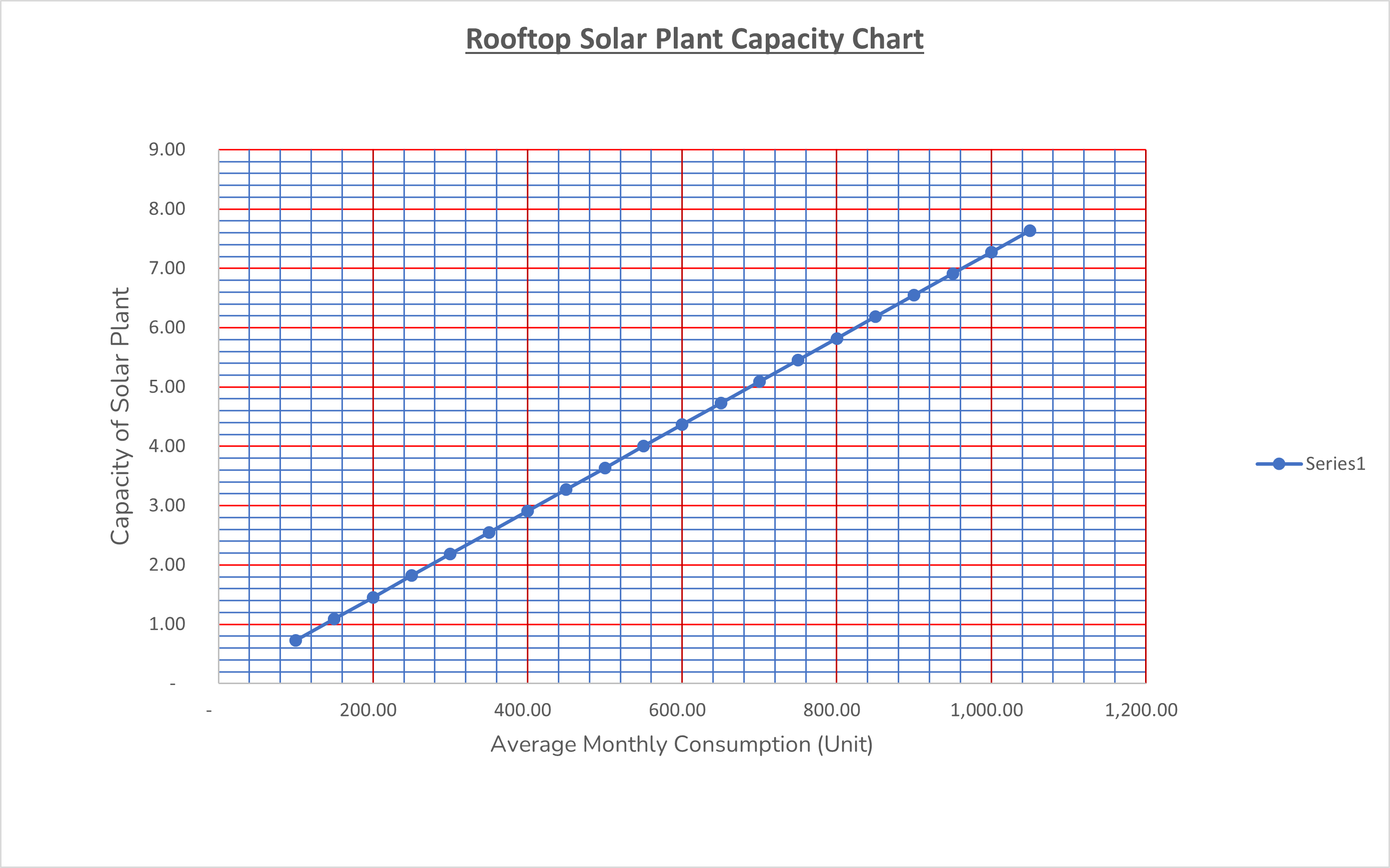What capacity of rooftop solar you need to completely offset your daily electricity consumption?
We have tried to explain in simple terms, how the output of Solar Installation is calculated and produces a general guide to help consumers determine required capacity of rooftop solar for their home -
Centrally located Madhya Pradesh (MP) is the second largest (308.25 km2) and the sixth most populated Indian state (72 million as per Census, 2011). The average annual per capita power consumption of MP is 739 units against the Indian average of 1010 units (both 2015 values). The average annual per capita income was Rupees 56,182 against the Indian average of Rupees 103,219 in 2016–17. MP has high solar potential of 300 days of sunshine along with high solar insolation of 5.5 kWh/m2/day.
If you are an average middle class household in Madhya Pradesh then potentially your monthly electricity consumption is not more than 739 units i.e. 739kWh per month.
Assuming your monthly electricity consumption is 750 kWh then you need to install about the same capacity of a solar power plant so that it completely offsets your entire energy consumption for the year. Now, as per statistical data, Madhya Pradesh receives about 300 days of sunshine in a year along with high solar insolation of 5.5kWh/m2/day.
Let’s calculate the yearly consumption of your household i.e. 750 kWh per month X 12 month per year = 9000 kWh per year or 9000 units per year.
Assuming you have done your fair share of research and know about different types of solar PV Modules available in the market, you know that Monocrystalline PV Modules are high efficient modules used for domestic rooftop or small commercial rooftop systems. These modules have efficiency of 18-21 %.
Let’s be conservative here and assume that the solar PV Modules are giving you an efficiency of 18% (which is a considerable underestimation for Monocrystalline PV Modules).
Total energy that can be generated in a
year per m2 of Solar Power Plant = 5.5 kWh/m2/day *300 clear days per year * efficiency
= 5.5 x 300 x 0.18
= 297 kWh/m2/year
Hence, total area that will be required to completely offset your energy consumption will be = 9000/297
= 30.30 m2
Hence, capacity of Rooftop Solar Plant = 1 kW/m2 x 30.30 m2 x 0.18
= 5.45 kW
Conclusion:
If you are a middle class household with average electricity consumption, all you need to do is install a rooftop solar plant of 5.45 kW capacity to completely offset your energy consumption and boast of not contributing to global warming.
To make your task easier, we have produced below a chart for determining the suitable capacity of a rooftop solar power plant/ installation for your home. Just read the value corresponding to your average monthly units of electricity consumption. It is advisable to determine the average electricity consumption by average last 12 month's electricity bills.

Note - Values produced below are reached after some reasonable assumptions and are derived for Madhya Pradesh, actual output may vary depending upon several factors such as location, efficiency of PV Modules, time of the year etc. It is always better to receive consultation from installation professionals.
To get free consultation from Solarmeter.in click here


